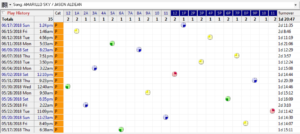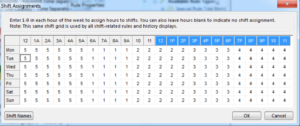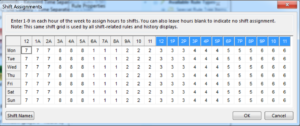It’s not HISTORY, It’s the FUTURE!
When your scheduling your music you schedule ahead. You schedule a day or a week ahead. When you do then you check various metrics in your log but you should also check the history.
The funny thing is the history is what is scheduled ahead for the week or next day. You are putting down the train tracks of your music to travel over the next day and week.
How do you judge your history?
It’s really pretty simple for a tight current. How about stair-stepping through the hours?

Then for something that turns a little slower like a recurrent.. perhaps stair stepping through the dayparts!

And what about a gold song with an even slower turnover?

I look for turnovers that aren’t unacceptably close or turnovers that are much longer than the average. The more often each play is close the average turnover the better.
Plus I look for even usage of all hours. And how long does it take before a song appears in the same hour? Here are 18 plays and all of them are in distinctive hours.
There are many rules and techniques you can use to accomplish this. Many are using sensible and thoughtful math.
One is to set up your software with more shifts. Sometime folks have the Nielsen day-parts as “shifts.”

I’d suggest 8 three-hour day parts. Then when you ask a song to go through more day-parts. There are more distinctive places for the song to go!

The moral of the story, have a tight right library, but make sure the rules, settings and clock designs, size of categories are tuned to give you great histories. That is how you get create the impression of a big variety. Then you get higher TSL/ATSE.
Then you get great job offers, raises, bonuses, yes in radio it still happens. The really great programmers who get the best results are in demand!
One of the steps to excellent ratings is getting your “histories” for the songs in your music library perfect. Keith Hill 252-453-8888
